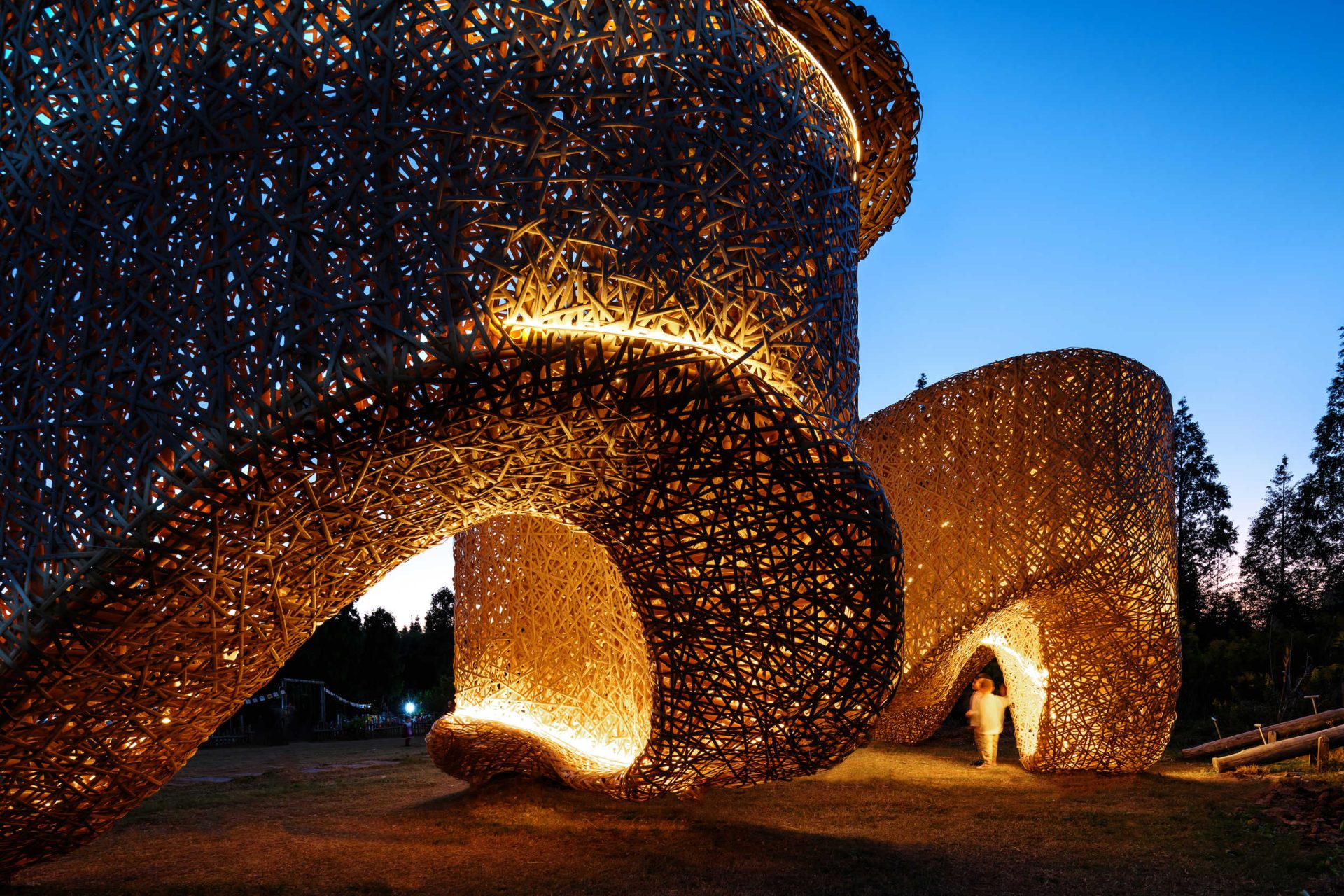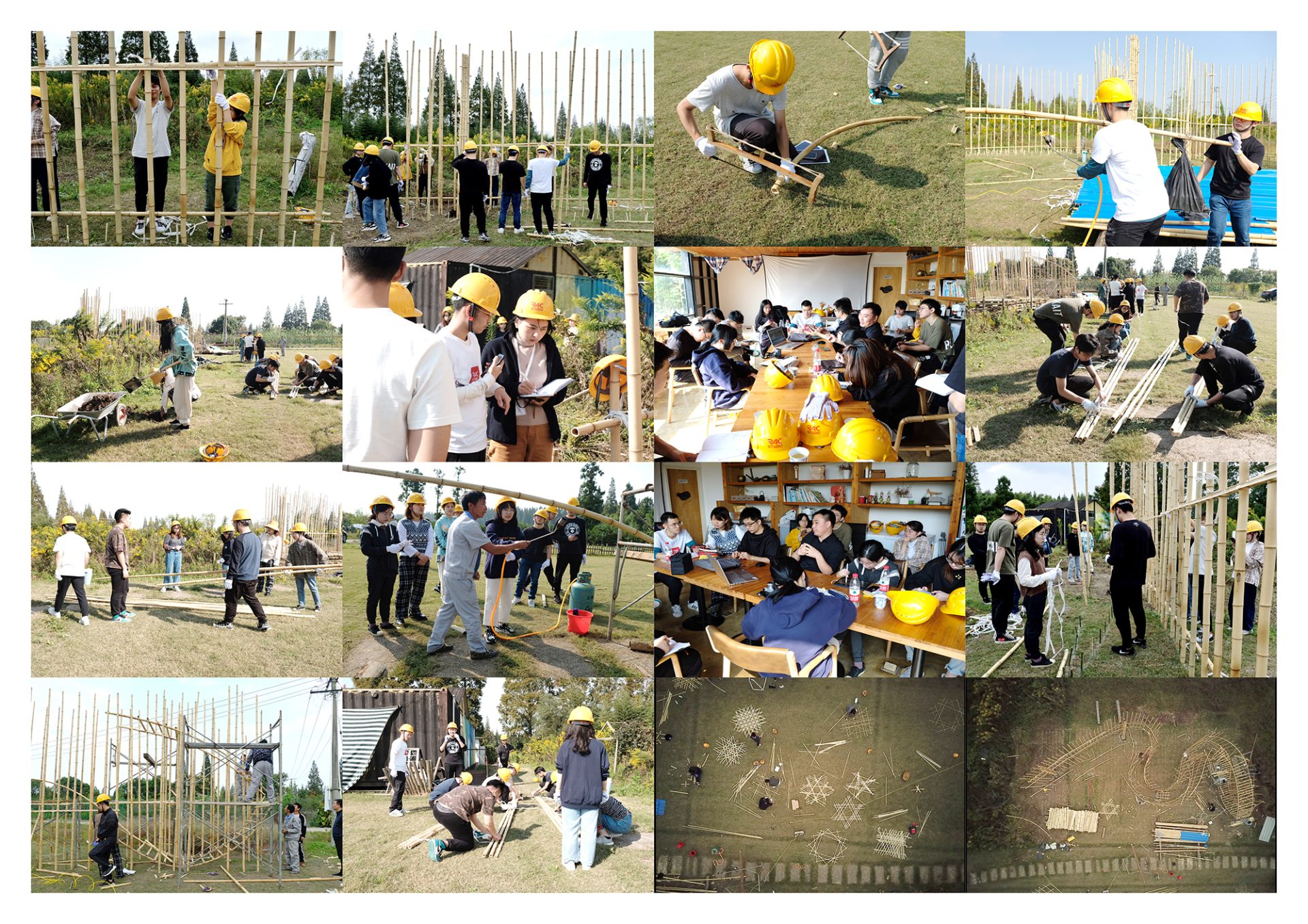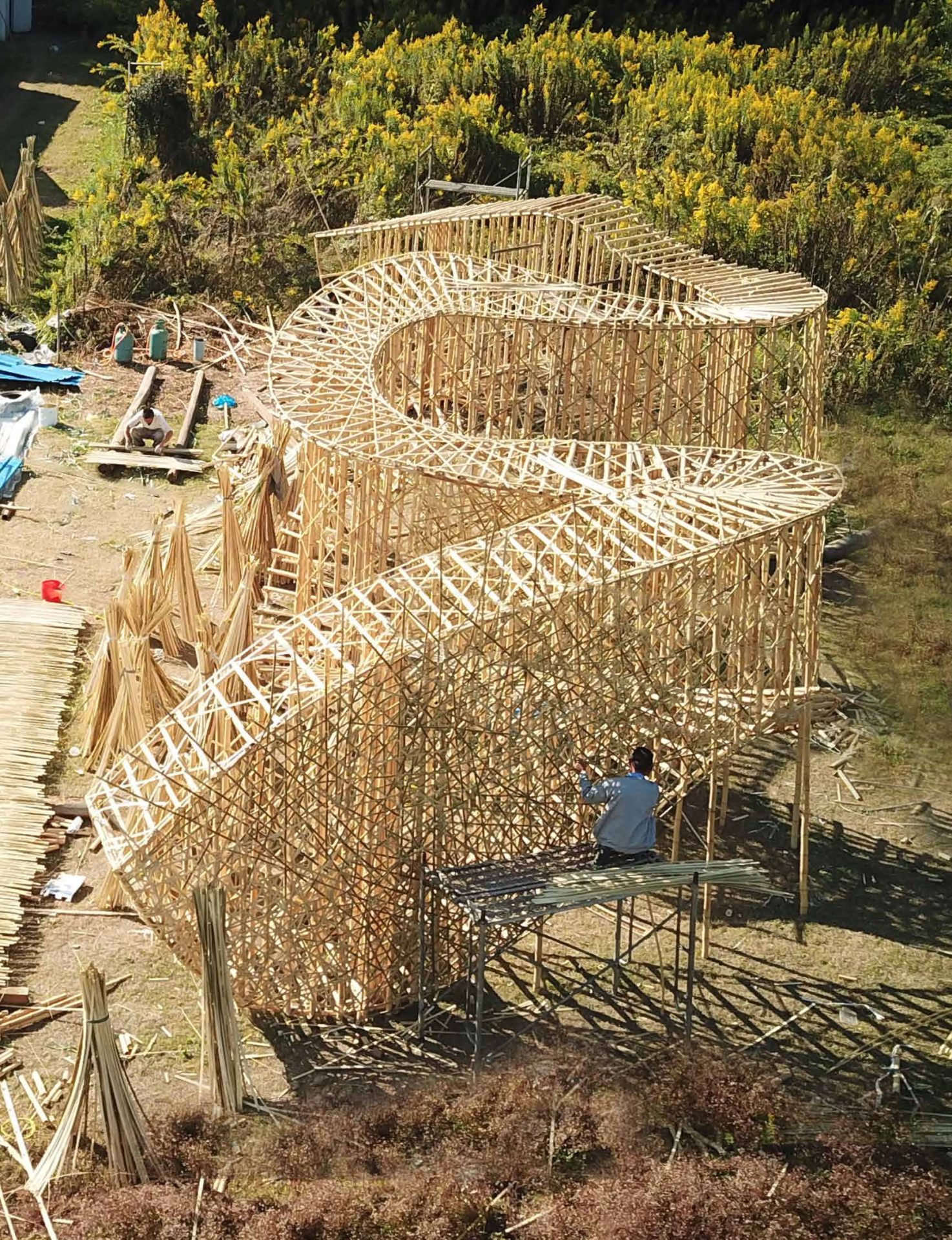A Bamboo Inspired Rural Space Experimentation
Lin architecture celebrates the process of bamboo construction through a ‘rural space experimentation project,’ that is focused on collaboration, ecological construction, sustainable operation, and research.

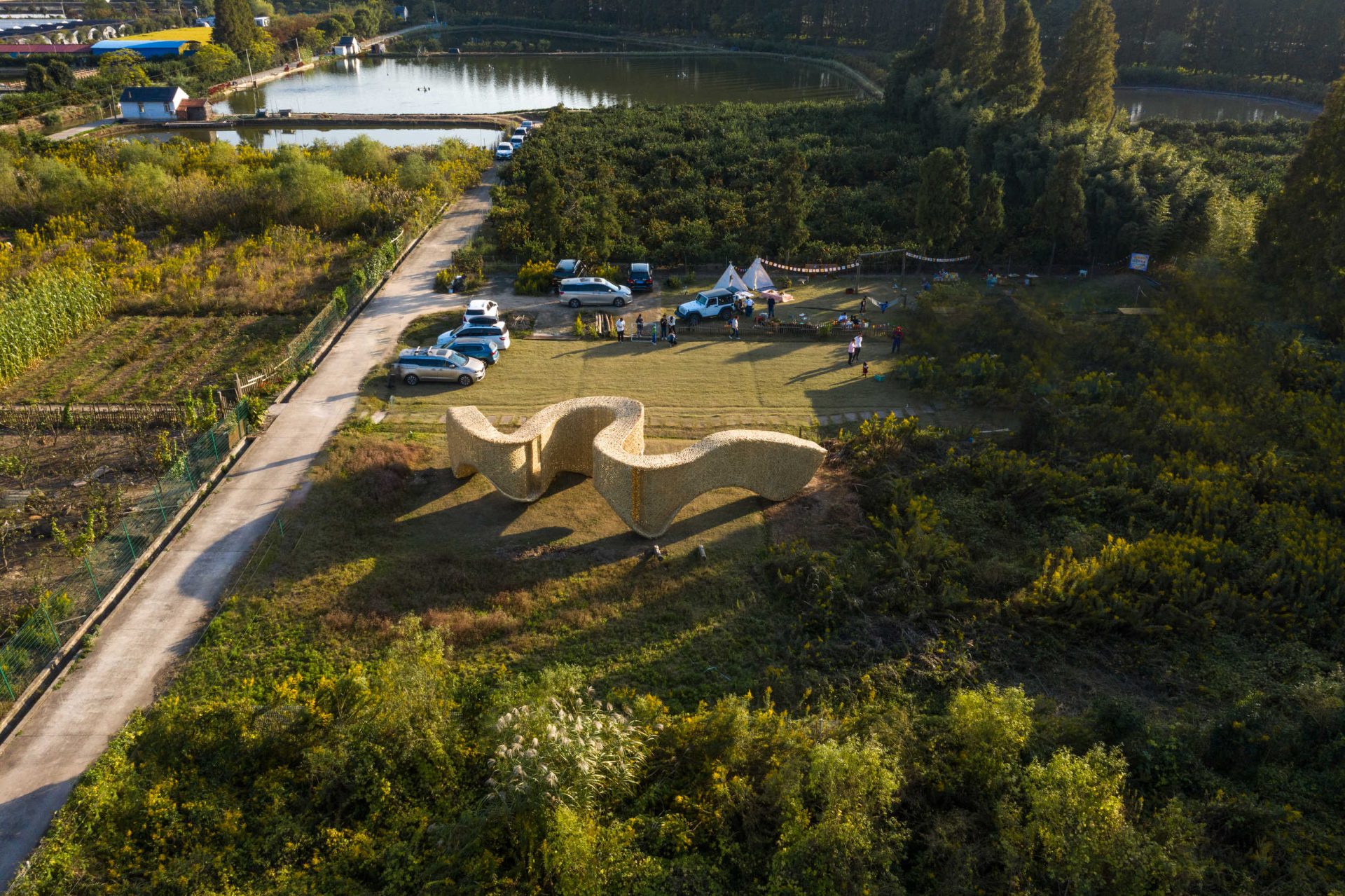 The project is located along Shanghai‘s island district of Chongming, a place with beautiful natural and ecological resources, a popular weekend destination among tourists seeking a retreat from the city. Recognising the use of the area, the team at Lin Architecture explored how the built space in a rural context can activate different behaviours and generate unexpected social interactions.
The project is located along Shanghai‘s island district of Chongming, a place with beautiful natural and ecological resources, a popular weekend destination among tourists seeking a retreat from the city. Recognising the use of the area, the team at Lin Architecture explored how the built space in a rural context can activate different behaviours and generate unexpected social interactions.
In general, there are two characteristics of people’s behaviours in the rural fields: one is the extensibility of the horizontal plane, and the other is the obscurity of spatial aggregation, according to the creators.
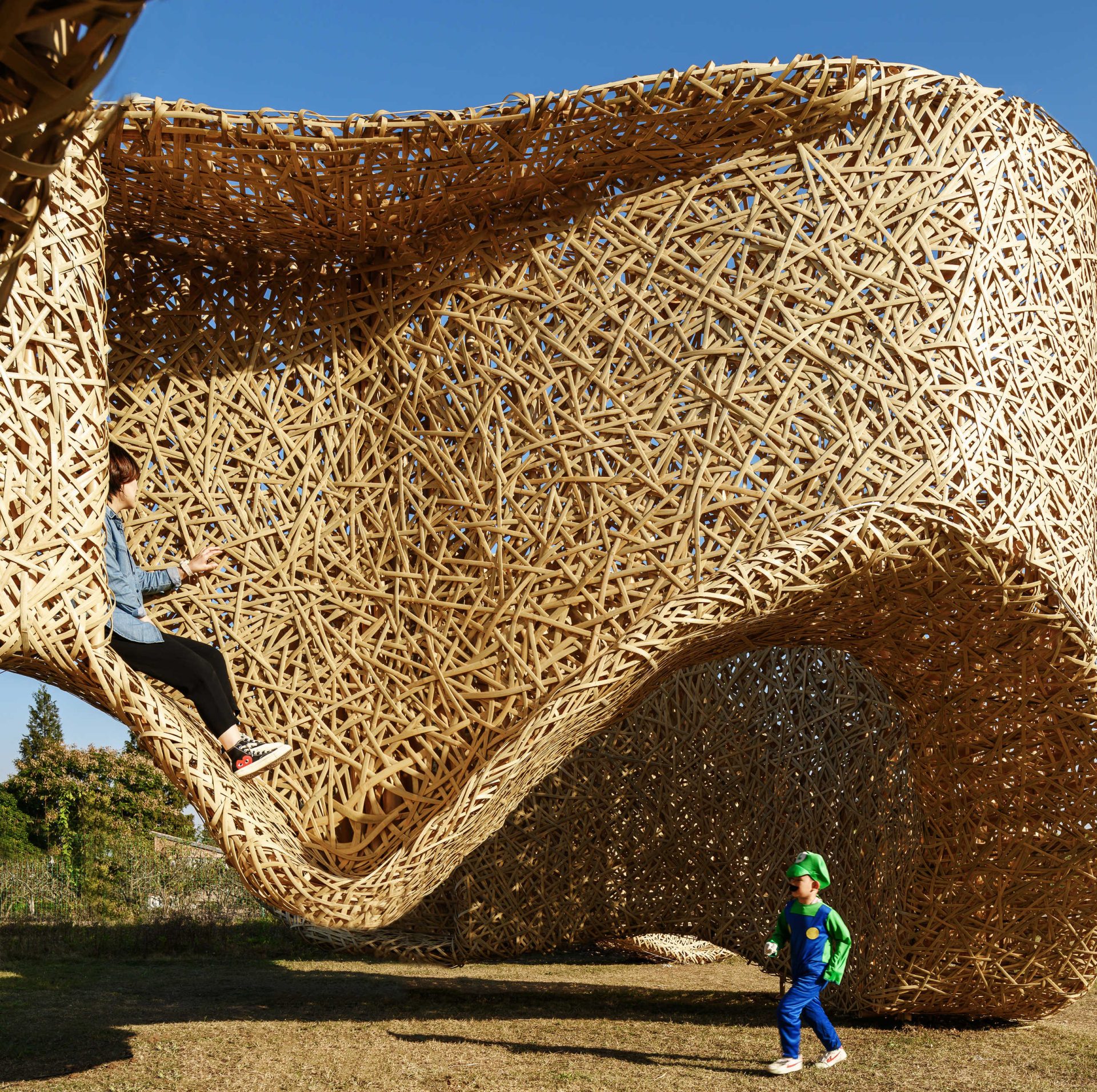 The team at Lin architecture comments on the process of realising its bamboo pavilion, “During the process of more than two weeks, the whole construction combines research and participation. With the help and guidance of professional workers, students were able to experience the project from the start to its completion.”
The team at Lin architecture comments on the process of realising its bamboo pavilion, “During the process of more than two weeks, the whole construction combines research and participation. With the help and guidance of professional workers, students were able to experience the project from the start to its completion.”
The designers have put to use multiple processes, the Field Theory which is interactions between family members and strangers, that are realized by the space encouraging people to break the boundaries. People spend their time resting, talking, and transiting around the installation.
“They finally build up a sense of intimacy and connection by traveling from one field to another,experiencing a spectrum of social distance,” the designers say.
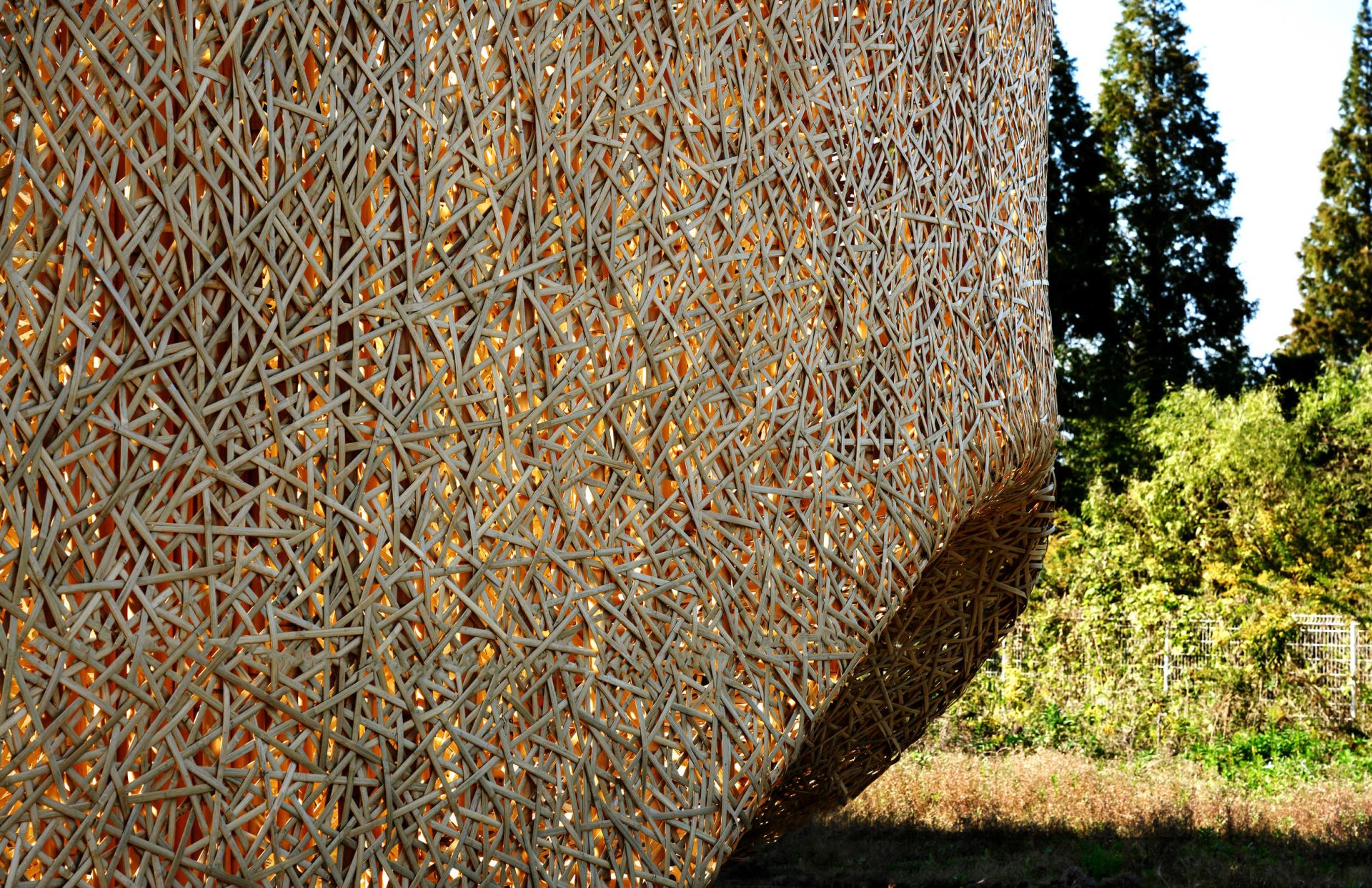
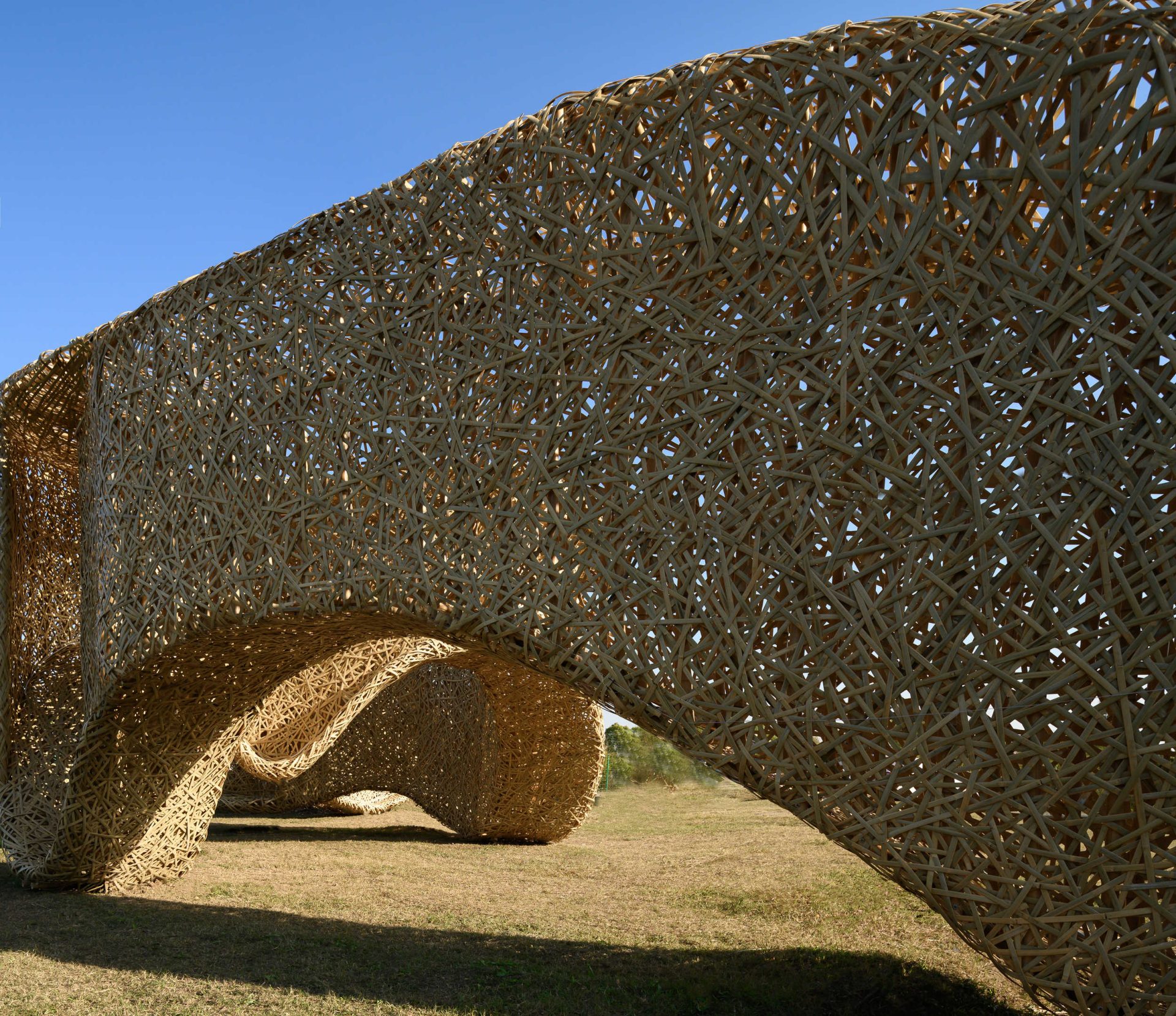 In the early stage of construction, the first consideration for the selection of materials is the relatively ecological material: raw bamboo, whose ecology is reflected in the less construction waste generated by the production, processing, and on-site installation of materials in the early stage. Bamboo is transported to the construction site after selection, high-temperature cooking, carbonisation, and anti-corrosion treatment. After locating, setting out, building frame, building primary and secondary structure, the overall frame of the design is formed, and then woven with bamboo strips to complete the façade. Bamboo has good bending and compression properties, and it has a good weaving effect for irregular shape, and it is easy to restore the effect of the design itself.
In the early stage of construction, the first consideration for the selection of materials is the relatively ecological material: raw bamboo, whose ecology is reflected in the less construction waste generated by the production, processing, and on-site installation of materials in the early stage. Bamboo is transported to the construction site after selection, high-temperature cooking, carbonisation, and anti-corrosion treatment. After locating, setting out, building frame, building primary and secondary structure, the overall frame of the design is formed, and then woven with bamboo strips to complete the façade. Bamboo has good bending and compression properties, and it has a good weaving effect for irregular shape, and it is easy to restore the effect of the design itself.
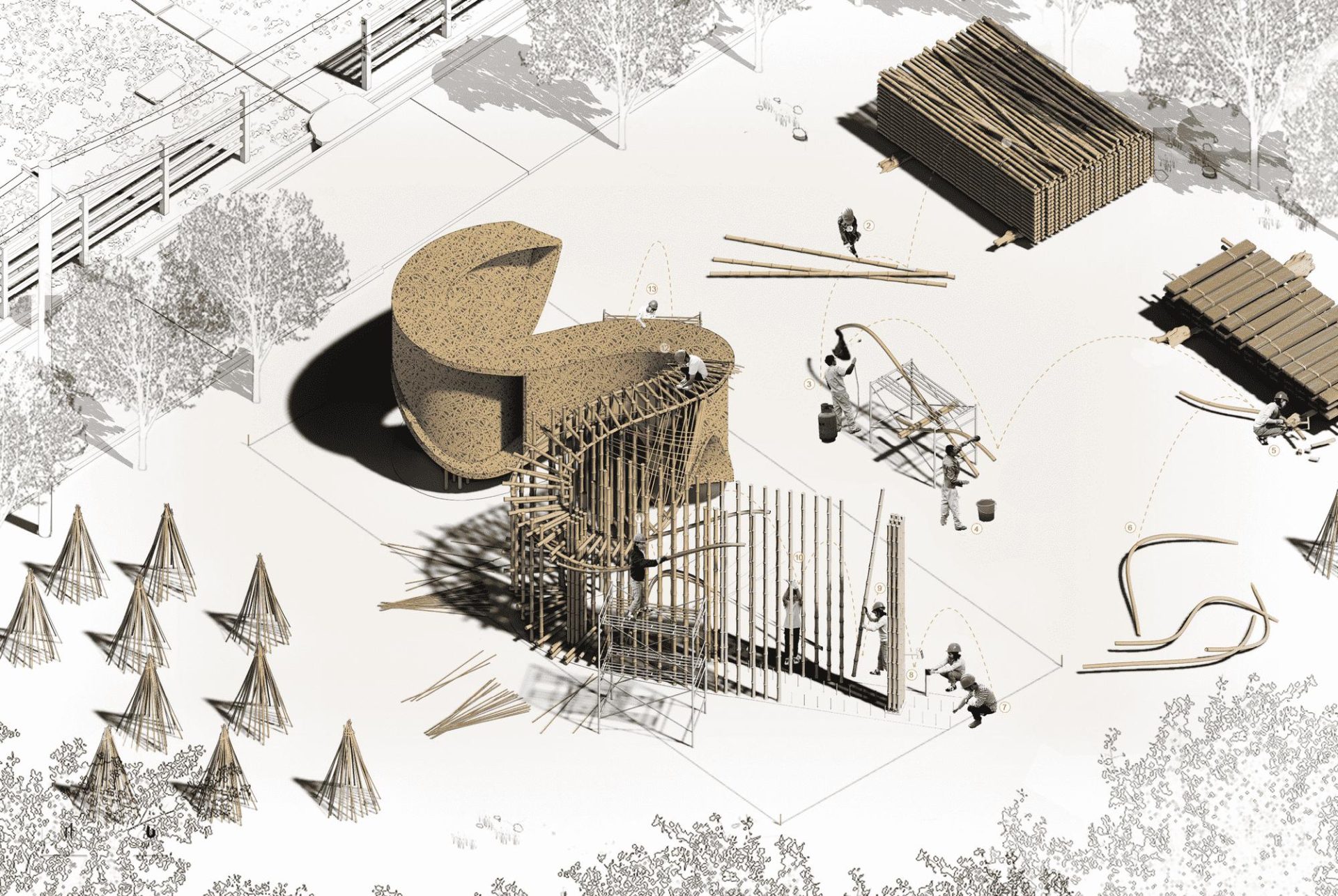
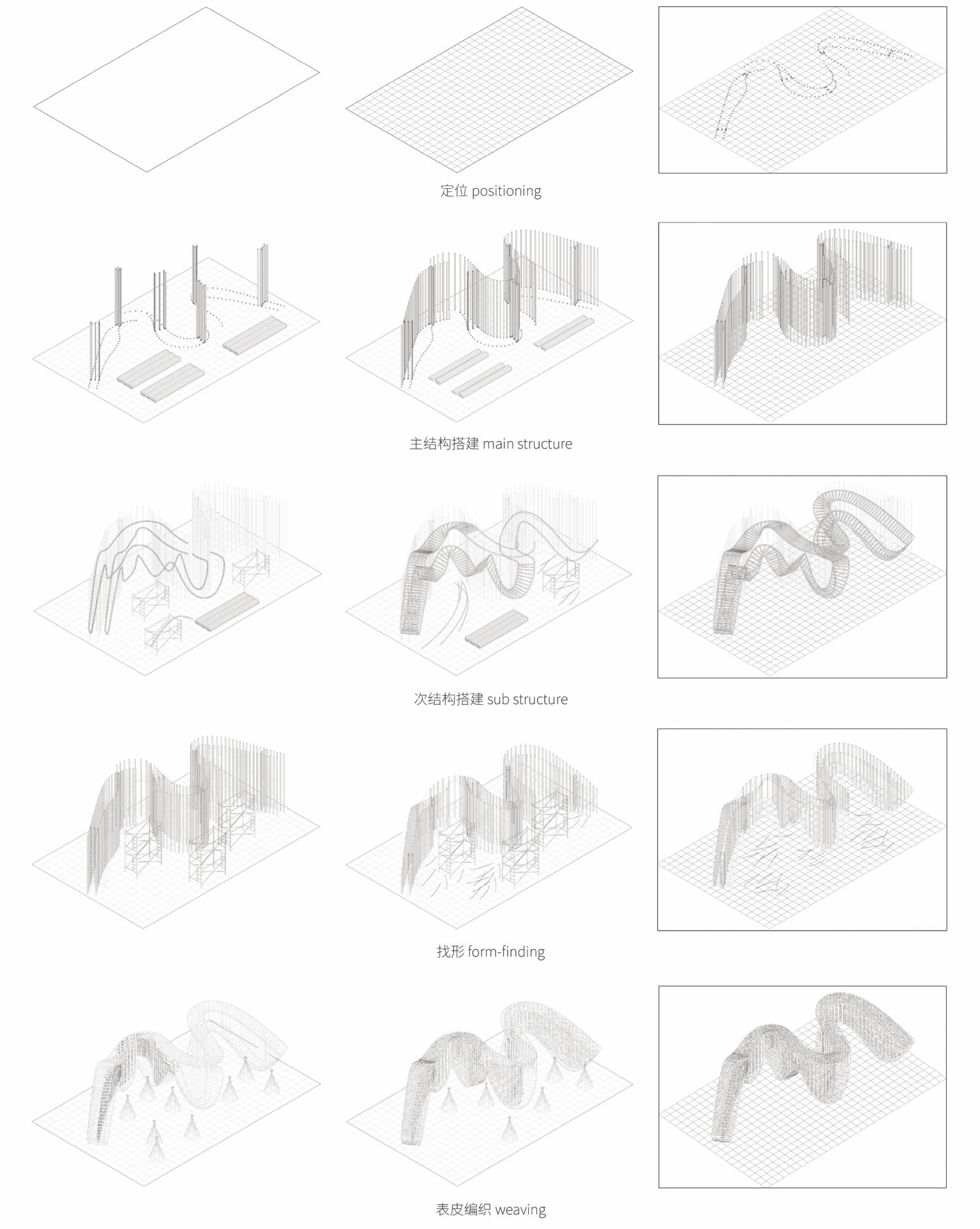 Over the duration of more than two weeks, with the help and guidance of professional workers, students were able to experience the entirety of the project, incorporating both research and field practice, note the designers.
Over the duration of more than two weeks, with the help and guidance of professional workers, students were able to experience the entirety of the project, incorporating both research and field practice, note the designers.


